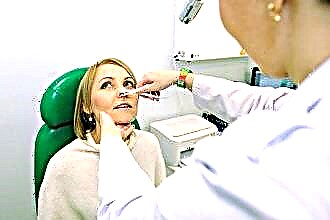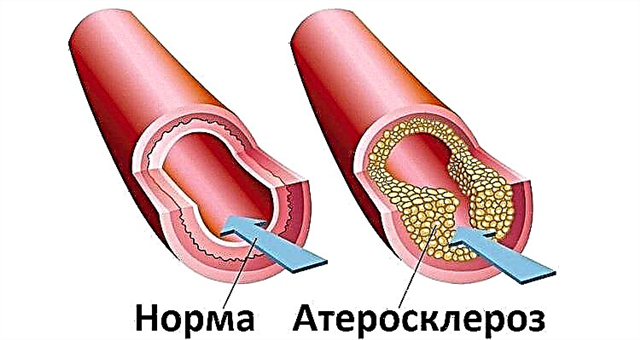 ENT disease is characterized by damage to several parts of the respiratory tract at once - the oral cavity, trachea and pharynx. A decrease in the human immune status provokes the multiplication of opportunistic agents that affect the mucous membranes of the respiratory system. Very often pharyngotracheitis develops against the background of other diseases - tonsillitis, flu, SARS, etc.
ENT disease is characterized by damage to several parts of the respiratory tract at once - the oral cavity, trachea and pharynx. A decrease in the human immune status provokes the multiplication of opportunistic agents that affect the mucous membranes of the respiratory system. Very often pharyngotracheitis develops against the background of other diseases - tonsillitis, flu, SARS, etc.
The acute form of the disease is almost identical to tonsillitis, however, with tonsillitis, only the palatine tonsils are affected, and with pharyngotracheitis - at least two parts of the respiratory tract.
Pharyngotracheitis - what is it?
Pharyngotracheitis is a combination of two respiratory diseases at once - tracheitis and pharyngitis. Very often, patients are first diagnosed with pharyngitis, but with untimely treatment, the infection descends below the pharynx and affects the trachea, as a result of which a complex disease develops. Infectious pharyngotracheitis can be provoked by:
- staphylococci;
- adenoviruses;
- rhinoviruses;
- pneumococci;
- Pfeifer's wand;
- streptococci;
- fungus of the genus Candida;
- coronaviruses.
Pharyngotracheitis is accompanied by coughing fits, which can provoke tracheal muscle spasm and respiratory failure.
Hypothermia, trauma to the pharyngeal mucosa, hormonal imbalance, dysbiosis, tobacco smoking, the use of cold liquids, etc. contribute to the development of infection. Very often, the infection enters the respiratory tract from the nasal cavity in chronic rhinitis.
Pharyngotracheitis classification
Pharyngotracheitis often occurs as a complication of flu, sore throat, or colds. The infection spreads quickly and simultaneously affects several parts of the respiratory tract. Depending on the characteristics of the course of the disease, there are two forms of pharyngotracheitis:
- acute - characterized by a sudden rise in temperature, unproductive spastic cough, severe swelling of the trachea and pharynx;
- chronic - characterized by a sluggish inflammation of the mucous membranes of the pharynx and trachea, coughing attacks occur mainly at night, while the temperature rises slightly.
The acute form of the disease is provoked mainly by viruses, and the chronic one - by bacteria. With inflammation of the airways, soft tissues undergo morphological changes, in this regard, there are three types of pharyngotracheitis:
- catarrhal - the mucous membranes swell strongly and acquire a bright red color, but there are no purulent lesions;
- hypertrophic - the mucous membrane affected by inflammation somewhat increases in size due to the expansion of blood vessels and the accumulation of intercellular fluid in the mucous epithelium;
- atrophic - in the lesions, the mucous membrane becomes very thin and becomes covered with crusts, which subsequently irritate the throat and provoke coughing attacks.
Catarrhal inflammation occurs mainly with the development of a viral infection, but atrophic and hypertrophic changes in tissues most often occur in the chronic course of ENT disease.
Pharyngotracheitis contagiousness
Is pharyngotracheitis contagious? The degree of infectiousness (contagiousness) of the disease is determined by the virulence of infectious agents and the immune status of a person. If the inflammation of the respiratory system was provoked by viruses, the likelihood of infection will be quite high.
Viruses can exist in the environment for a long time, so they are transmitted from a sick person to a healthy person by airborne droplets during conversation and coughing attacks in the first. With short-term contact with a carrier of infection, it is possible to become infected only in case of reduced resistance of the organism. If pathogens enter the ENT organs, they are quickly inactivated by immune cells. But with secondary immunodeficiencies, the activity of viruses is not suppressed by leukocytes and neutrophils, as a result of which inflammation occurs.
Disease-causing bacteria, such as staphylococci and pneumococci, have less virulence and pathogenicity (the ability to cause pathological reactions in tissues). In addition, they are unstable in the environment, so they do not exist outside living organisms for long. If pharyngotracheitis was triggered by microbes, it will be possible to get infected only with a kiss or the use of one dish or hygiene product. In other words, a bacterial infection can be transmitted by household contact, so the likelihood of infection is relatively low.
With mycotic lesions of the respiratory tract, the degree of contagiousness of the disease depends on the causative agent of the infection. For example, candida (yeast-like fungi) are opportunistic pathogens. They live in the mucous membranes of the ENT organs of even healthy people, therefore, with normal resistance of the body, they do not cause disease. But aspergillus and actinomycetes are microorganisms with high pathogenicity and virulence. They can be transmitted by contact and airborne droplets.
It is undesirable to contact the carrier of the infection until he undergoes a microbiological analysis and the nature of the causative agent of the infection is determined.
Clinical picture
The symptoms of the disease combine the manifestations of both tracheitis and pharyngitis. But if pharyngotracheitis is accompanied by other diseases, for example, tonsillitis or chronic rhinitis, the symptomatic picture will be replenished with new signs - nasal congestion, sore throat, glandular hypertrophy, etc. Typical manifestations of a complex disease include:
- burning and sore throat;
- difficulty swallowing;
- lack of appetite;
- coughing fits;
- headache;
- spasm of the muscles of the larynx;
- muscle weakness;
- wheezing breathing (stridor);
- soreness of the cervical lymph nodes;
- chest pain (manifested after a coughing fit).
On examination, there is a loosening and redness of the posterior pharyngeal wall, swelling of the throat and palatine arches, a slight increase in the glands.
 If the disease was provoked by bacteria, a white bloom will be present on the walls of the laryngopharynx, if fungi - a yellowish cheesy bloom.
If the disease was provoked by bacteria, a white bloom will be present on the walls of the laryngopharynx, if fungi - a yellowish cheesy bloom.
With advanced pharyngotracheitis, coughing fits can last up to 40-50 minutes, which can cause respiratory or cardiovascular failure. In young children, the disease often develops against the background of scarlet fever or flu. A day after infection of the trachea and pharynx, patients experience coughing fits, which intensify in the evening. With a favorable course of pharyngotracheitis, after 3-4 days the cough becomes wet, which indicates the dilution and evacuation of sputum from the respiratory tract.
Diagnostics
When symptoms appear that indicate the development of pharyngotracheitis, you need to seek help from a therapist or otolaryngologist. During the examination of the patient, the following methods are used:
- pharyngoscopy;
- visual inspection;
- bacterioscopy;
- ultrasound procedure;
- blood chemistry.
Symptoms of the combined ENT disease practically do not differ from the manifestations of other common respiratory diseases. Therefore, only a doctor can accurately diagnose pathology.After identifying the causative agent of the infection, the patient is prescribed appropriate medication, and, if necessary, physiotherapeutic treatment.
Independent and, as a rule, inadequate treatment of diseases only complicates the diagnosis. The clinical picture is blurred, as a result of which it becomes difficult to establish the exact cause of the deterioration in the patient's well-being. In addition, inadequate antibiotic therapy can cause bacteria to develop resistance to most antimicrobial agents, which will significantly complicate their selection.
Treatment methods
Only comprehensive and timely medical treatment can speed up the healing process and prevent complications. Without fail, patients are prescribed etiotropic drugs that directly destroy the causative agent of the infection. In addition, symptomatic drugs are prescribed to relieve the symptoms of the disease - cough, headaches, sore throat, swelling of the mucous membranes, etc.
In the treatment of pharyngotracheitis, the following can be used:
- antibiotics ("Zinacef", "Sumamed", "Amoxiclav") - destroy the cellular structures of staphylococci, meningococci and other bacteria;
- antiviral agents ("Lavomax", "Kagocel", "Viferon") - prevent the multiplication and introduction of viruses into the mucous membranes of the upper respiratory tract;
- antipyretics (Tamiflu, Nurofen, Paracetamol) - eliminate the symptoms of fever and lower the temperature;
- antihistamines (Erius, Ebastin, Desloratadine) - relieve swelling and reduce inflammation in the trachea and pharynx;
- antitussive drugs ("Tusuprex", "Sinekod", "Intussin") - stop attacks of unproductive cough;
- expectorants ("Ambroxol", "Prospan", "Lazolvan") - reduce the viscosity of sputum and accelerate its excretion from the bronchi and trachea.
With the correct preparation of the treatment regimen, it is possible to eliminate the manifestations of the disease within 3-4 days.
In addition to medications, it is advisable to resort to inhalation and gargling, which quickly reduce the severity of local symptoms of pharyngotracheitis.



